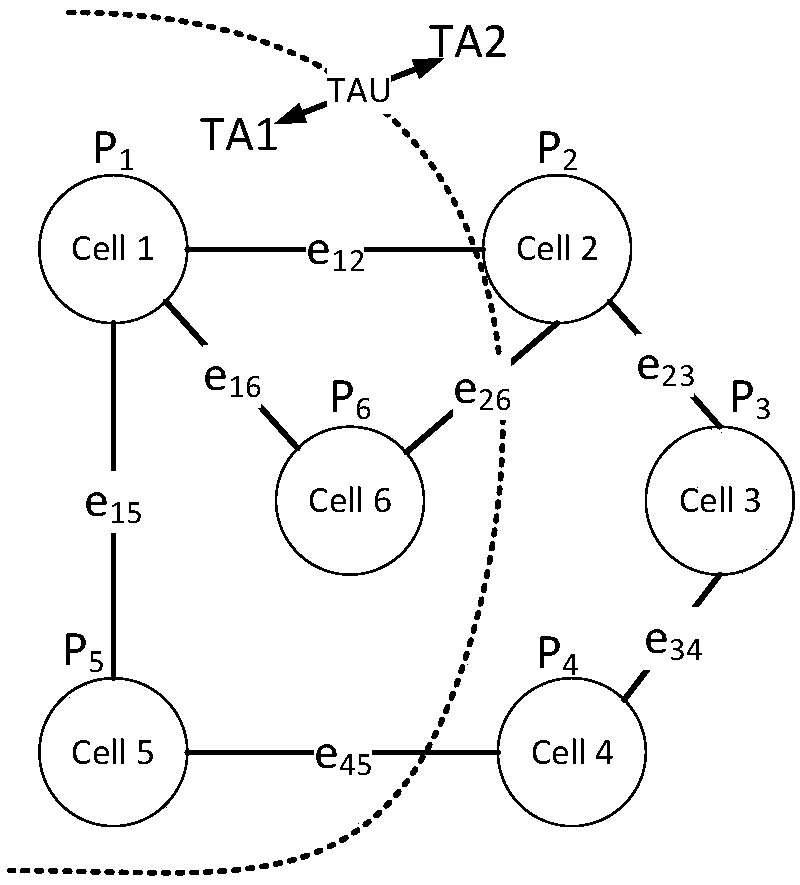Tracking region planning method based on spectral clustering
A tracking area and spectral clustering technology, applied in the planning of tracking areas, can solve the problems of not being able to better optimize the network system signaling cost, dividing small cells into a TA separately, and complex algorithm steps.
- Summary
- Abstract
- Description
- Claims
- Application Information
AI Technical Summary
Problems solved by technology
Method used
Image
Examples
Embodiment Construction
[0080] The invention will be further described below in conjunction with the accompanying drawings and examples.
[0081] Step 1, build a system model that generates a cellular network diagram
[0082] (1) In order to better simulate the randomness of small cell deployment in hotspot areas and the change of user movement trends, the present invention builds a system model based on the small cell deployment obeying the Poisson point process model. The main module structures involved in the system model are as follows: figure 1 shown.
[0083] (2) According to the cellular deployment model, user distribution model, user mobility model and system call model, generate a network diagram reflecting user mobility and paging characteristics. Such as figure 2 As shown, where the distribution density of small cell base stations λ=100, the variance σ of the two-dimensional Gaussian distribution of users 2 =500, a schematic diagram of trajectories of 288 users moving 500 steps around ...
PUM
 Login to View More
Login to View More Abstract
Description
Claims
Application Information
 Login to View More
Login to View More - R&D
- Intellectual Property
- Life Sciences
- Materials
- Tech Scout
- Unparalleled Data Quality
- Higher Quality Content
- 60% Fewer Hallucinations
Browse by: Latest US Patents, China's latest patents, Technical Efficacy Thesaurus, Application Domain, Technology Topic, Popular Technical Reports.
© 2025 PatSnap. All rights reserved.Legal|Privacy policy|Modern Slavery Act Transparency Statement|Sitemap|About US| Contact US: help@patsnap.com



